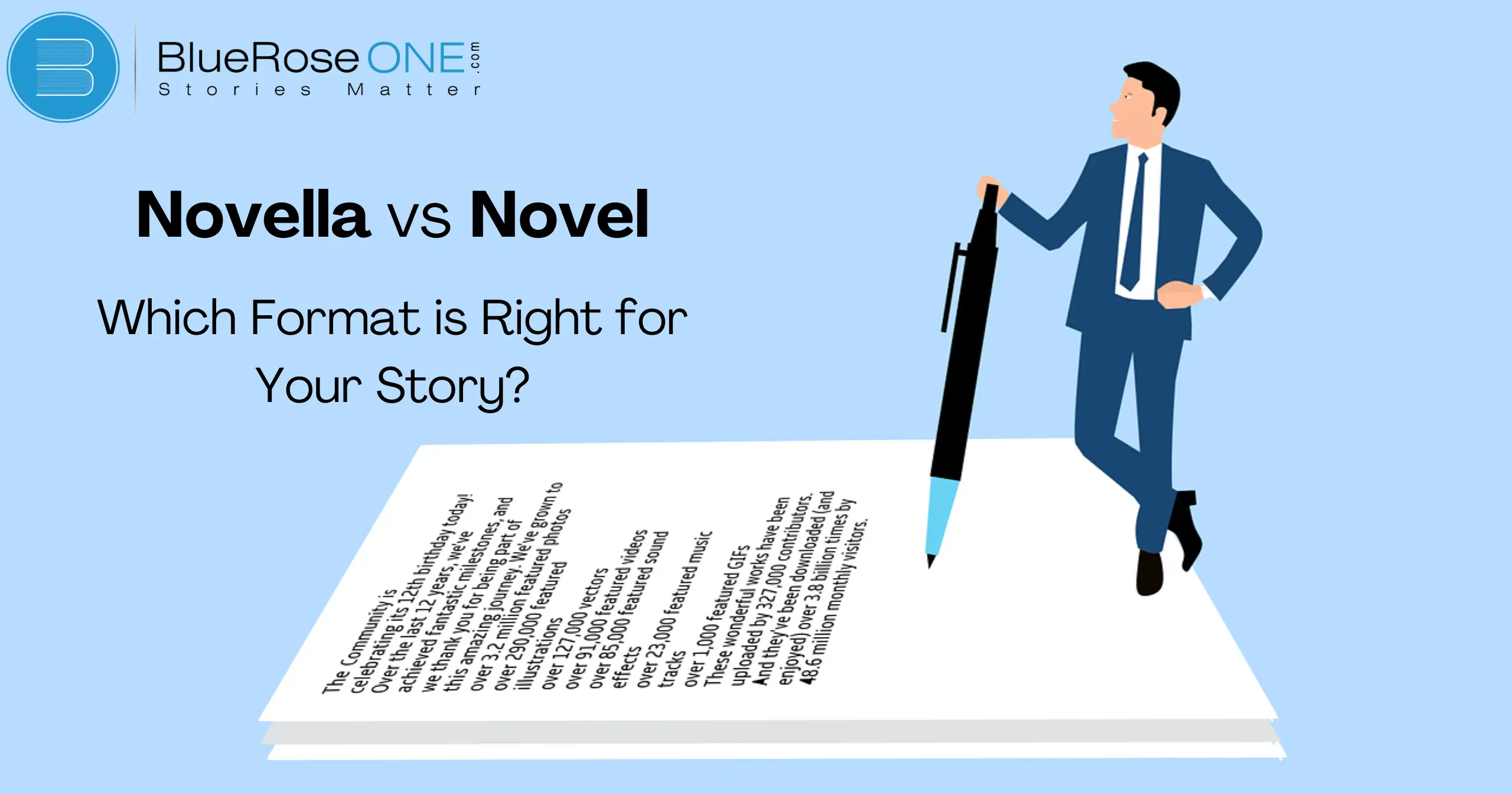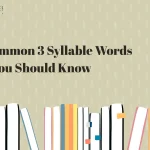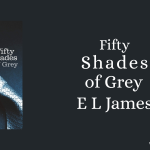For any writer, deciding whether to create a novel or a novella can be quite difficult. The advantages and disadvantages of each style are different, and the best option will frequently rely on the character of your story and your writing objectives. We’ll go over the main distinctions between novels and novellas in this post to help you decide which format works best for your story.
What is Novella?
A novella is a written work that is longer than a short story but shorter than a novel, typically ranging from 20,000 to 40,000 words. This format allows for a more detailed narrative than a short story while still being concise compared to a full-length novel.
Novellas often focus on a single idea or character, offering a compact yet rich storytelling experience. They are an excellent choice for exploring complex themes without the extended commitment required by a novel.
You may also read: 10 Proven Book Stratgies for Crafting the Perfect Book Title
Characteristics of Novellas
Length and Structure: Between 20,000 and 50,000 words, a novella provides a medium length between a short tale and a novel. Novellas concentrate on a single, cogent plot, in contrast to novels, which may include numerous subplots and a vast narrative.
A thorough examination of people and topics is made possible by this shortened format, which does not require the lengthy read of a full novel.
Novellas are the perfect format for writers who want to tell a gripping story in a shorter amount of time because of their simplified structure.
Narrative Depth: A novella’s richness of narrative is one of its main features. Novellas concentrate on a more focused, intense tale, whereas novels provide for greater room for substantial growth.
This concision enables a deeper exploration of themes and character emotions in a condensed amount of time. Novellas can tell a compelling, memorable story without the complicated subplots that are typically present in novels by condensing the story down to its essential components. Because of this, the novella is a great option for those who want a brief but impactful reading experience.
You may also like: The Rise of Shakti by Megha Dinesh: Book Review
Examples of Famous Novellas
- “Animal Farm” by George Orwell: A political allegory that explores the dynamics of power and corruption.
- “The Metamorphosis” by Franz Kafka: A profound exploration of alienation and identity through the story of a man who transforms into an insect.
You may also like: Top 10 Tony Robbins Books That Inspire Success and Change
What is a Novel?
A novel is an extended story that spans several hundred pages and delves into intricate themes and characters. Novels, as opposed to shorter works, permit the development of story, setting, and character arcs in great detail.
They provide a wide canvas for storytelling because they usually include more than 40,000 words. Novels are perfect for complex and engrossing storytelling since they frequently have several subplots and extensive world-building.
They are distinguished from novellas, which are shorter and have a narrower emphasis, by their length and depth.
Characteristics of Novels
Length and Structure: A novel is usually significantly longer than a novella, both in length and structure. Novels can have intricate narratives and in-depth character development because they typically contain more than 40,000 words and sometimes even 100,000 words or more.
They frequently have more complex narrative structures and several subplots. Novellas, on the other hand, are shorter—typically ranging from 17,500 to 40,000 words—and concentrate on a single, heavily developed story arc.
The depth and scope of storytelling in each medium are impacted by this variation in duration and structure.
Narrative Complexity: A novel’s depth and complicated layers of storytelling set it apart from lesser forms like novellas. This is referred to as narrative complexity.
Novels frequently have several subplots, fully realized characters, and complex narrative frameworks, which enable more in-depth world-building and thematic investigation.
Because of this intricacy, writers are able to combine multiple narratives and points of view, giving readers a more thorough and engaging experience. On the other hand, because they are shorter, novellas usually provide a more concentrated story.
Examples of Famous Novels
- “Pride and Prejudice” by Jane Austen: A classic novel that combines romance, social commentary, and detailed character studies.
- “Moby-Dick” by Herman Melville: A lengthy, complex narrative exploring themes of obsession, revenge, and the nature of evil.
You may also like: List of Top 10 Best Rabindranath Tagore Books of All Time
Consideration for the Novella Format
When to Choose a Novella: If your plot is too complicated for a short story but not long enough to warrant a full novel, then a novella is the perfect length.
Novellas are ideal for delving deeply into a single topic or character without committing to the length of a full-length novel. They function well in narratives that are particular, self-contained, or have a narrow storyline.
Novellas can be the ideal structure for stories that aim to effectively convey a strong message or a singular experience.
Benefits and Limitations: A novella’s shorter length permits a more concentrated narrative, among its many advantages. For stories that need a clear and succinct plot but don’t want to commit to a complete novel, this can be perfect.
Novellas are an excellent choice for beginning authors and busy readers because they are also quicker to write and read. Their conciseness, nevertheless, may sometimes work against them because it limits the complexity of the plot and the depth of character development.
You may also like: 5 Affordable Tools for Easy Book Formatting and Design
Considerations for Novel Format
When to Choose a Novel: Think about the intricacy of your plot and the level of character development you hope to accomplish while selecting a novel.
Novels provide a lot of room to explore several subplots and character arcs, making them perfect for complex plots and extensive world-building.
Novels are the ideal length for stories that need to be developed thoroughly or that touch on a variety of topics since they can keep readers interested and provide a gratifying, engrossing read.
Benefits and Limitations: Because of their length, novels provide a wealth of storytelling possibilities, including the ability to construct intricate plots and deeply rooted characters.
There is greater space for complex features and subplots in this format. But, novels’ length can also be a disadvantage; they take longer to write and read, which may not be convenient for all readers or writers. However, because they are shorter than novels, novellas allow forow t more focused storytelling, though they might not have the same depth.
You may also like: Vellum Review: Definition, Features and Pricing
How to Decide Which Format Fits Your Story
Assessing Your Story’s Scope and Depth
Evaluating the breadth and complexity of your narrative is essential when deciding between a novella and a novel. A novel usually provides greater storytelling space, allowing for the development of numerous subplots and complex character arcs.
Novels might be a better option if your work has a sophisticated plot and extensive, well-developed world-building. If, on the other hand, your story is more tightly focused, with a single, obvious conflict and fewer supporting characters, a novella would be a better format.
By weighing these factors, you may be sure that the structure you’ve chosen best meets the requirements of your narrative.
Evaluating Your Writing Goals
Assessing your writing objectives should be the first step in determining if a novella or book is the best structure for your story.
Take into account the intricacy and depth of your story. A novel would be a better option if your goal is to explore a complex, multi-plot world.
However, a novella can work better if your story centers on a single, significant event or a condensed topic. Writing a more engaging and successful story will come from matching your objectives with the right framework.
You may also like: Aravind Adiga Books of All Time | BlueRoseOne
Understand Your Target Audience
Determining whether a novel or novella is the right format for your work depends heavily on your target readership. A novel usually offers enough room to explore complicated issues and appeals to readers who like more sophisticated narratives and richer character development.
A novella, on the other hand, is more appropriate for readers looking for a condensed, concentrated story that offers a full experience in a reduced length. You can select the format that best suits your target audience’s expectations and degree of involvement by matching your tale to their preferences.
Conclusion
Deciding between a novella and a novel depends on various factors, including the scope of your story, your writing goals, and your target audience. Both formats offer unique opportunities for storytelling, and the choice ultimately comes down to what best serves your narrative. Consider the length, depth, and complexity of your story to make an informed decision.
You may also like: What Is Contemporary Fiction? Definition, Themes with Examples
















